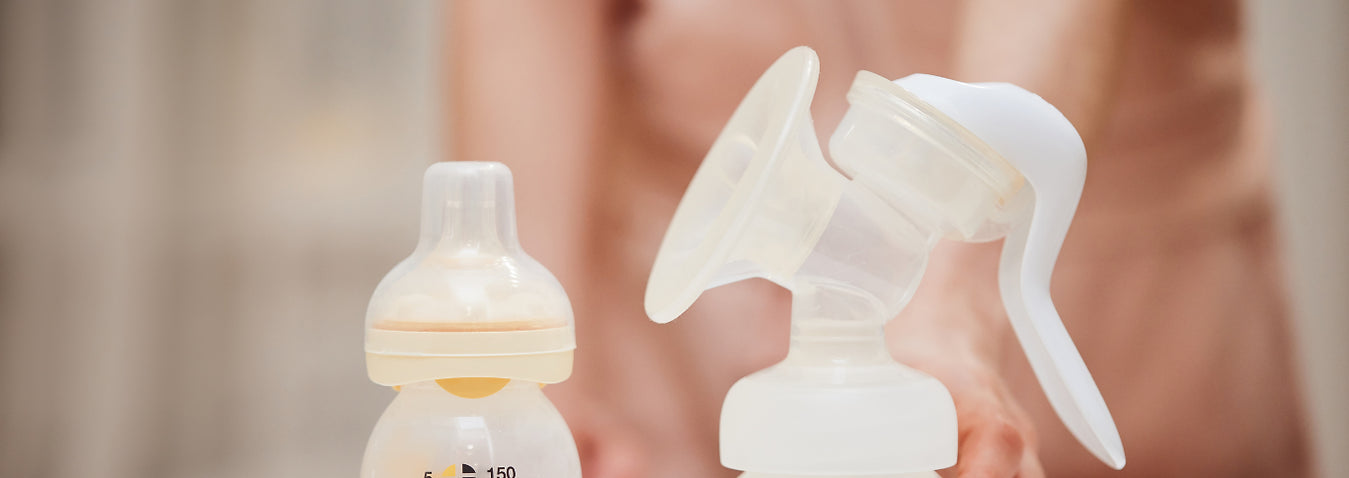Breastfeeding can be a rewarding yet challenging journey. Whether you’re planning to pump and store milk regularly or just occasionally, having the right information and support can make a significant difference. Here are some essential tips and advice to help you navigate pumping, storing, and managing your breast milk effectively.
Pumping Breast Milk
Choosing the Right Pump
- Types of Pumps: There are manual, battery-operated, and electric breast pumps. Electric pumps are generally more efficient, especially for regular use.
- Double Pump: A double pump can save time by allowing you to pump both breasts simultaneously, and it may help maintain milk supply.
- Comfort: Ensure the pump’s flange fits your breast comfortably to avoid discomfort and improve milk expression.
Establishing a Routine
- Timing: Pump at regular intervals that mimic your baby’s feeding schedule to help maintain your milk supply.
- Relaxation: Find a quiet, comfortable place to pump. Relaxation techniques, such as deep breathing or listening to music, can help with milk let-down.
- Hydration and Nutrition: Stay hydrated and maintain a balanced diet to support your milk production.
Maximizing Milk Production
- Massage and Warmth: Gently massaging your breasts and applying warm compresses before pumping can help stimulate milk flow.
- Frequency: Pumping more frequently can increase your milk supply. Aim for about 8-10 pumping sessions per day if you’re exclusively pumping.
- Emptying the Breast: Ensure your breasts are fully emptied during each session to stimulate more milk production.
Cleaning and Maintenance
- Sterilization: Clean and sterilize all pump parts that come into contact with milk after each use to prevent bacterial growth.
- Pump Maintenance: Regularly check and replace parts like valves and membranes, which can wear out and affect the pump’s efficiency.
Self-Care Practices
Rest and Sleep
- Nap When Your Baby Naps: Try to rest during your baby’s naps to recover from interrupted nighttime sleep.
- Create a Sleep-Conducive Environment: Keep your bedroom cool, dark, and quiet to improve sleep quality.
Physical Activity
- Gentle Exercises: Engage in light activities such as walking, postpartum yoga, or stretching. These help improve mood and energy levels.
- Pelvic Floor Exercises: Strengthen your pelvic floor with Kegel exercises to support recovery after childbirth.
Mental Health
- Mindfulness and Relaxation: Practice mindfulness, deep breathing, or meditation to reduce stress and promote relaxation.
- Seek Support: Don’t hesitate to talk to friends, family, or a therapist if you’re feeling overwhelmed or experiencing postpartum depression.
Hygiene and Personal Care
- Breast Care: Keep your breasts clean and dry to prevent infections. Use nipple cream if you experience soreness or cracking.
- Pamper Yourself: Take time for self-care routines, whether it’s a warm bath, reading a book, or simply enjoying some quiet time.
Managing Stress
Time Management
- Set Realistic Expectations: Focus on one day at a time and set achievable goals to avoid feeling overwhelmed.
- Prioritize Tasks: Make a list of tasks and prioritize them. Delegate where possible to lighten your load.
Support Network
- Build a Support System: Surround yourself with supportive family and friends. Join a breastfeeding group to connect with other mothers.
- Accept Help: Don’t hesitate to accept help with chores or childcare. It’s okay to lean on others.
Healthy Boundaries
- Know When to Say No: Protect your energy by politely declining additional responsibilities that could add stress.
- Take Breaks: Give yourself permission to take breaks and step away from your responsibilities for a moment of peace.
Enjoy Moments
- Be Present: Enjoy bonding time with your baby and celebrate small milestones. Cherish these moments as they will pass quickly.
Breastfeeding and Returning to Work
Plan Ahead: Start building a milk stash a few weeks before returning to work.
- Know Your Rights: Understand your workplace’s breastfeeding and pumping policies.
- Communicate with Your Employer: Discuss your needs for pumping breaks and a private space.
- Create a Pumping Schedule: Try to pump at the same times your baby would normally feed.
- Maintain Connection: Keep a picture or recording of your baby with you while pumping to help with milk let-down.
Nutrition for Breastfeeding Mothers
Eat a Balanced Diet: Incorporate a variety of foods to ensure you get the necessary nutrients.
Extra Calories: Consume an additional 300-500 calories per day to support milk production.
Omega-3 Fatty Acids: Include sources of DHA like fish or supplements to support your baby’s brain development.
Limit Caffeine: Keep caffeine intake moderate as it can pass through breast milk and affect your baby.
Avoid Alcohol: Alcohol can pass into your breast milk; if you choose to drink, wait at least 2-3 hours before breastfeeding.

